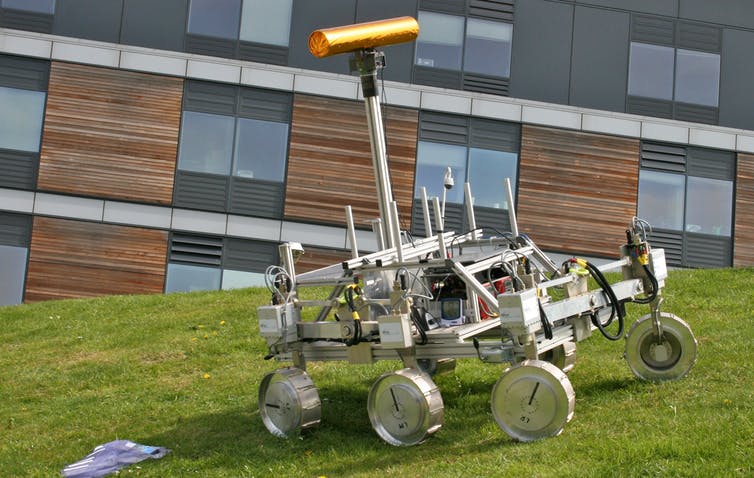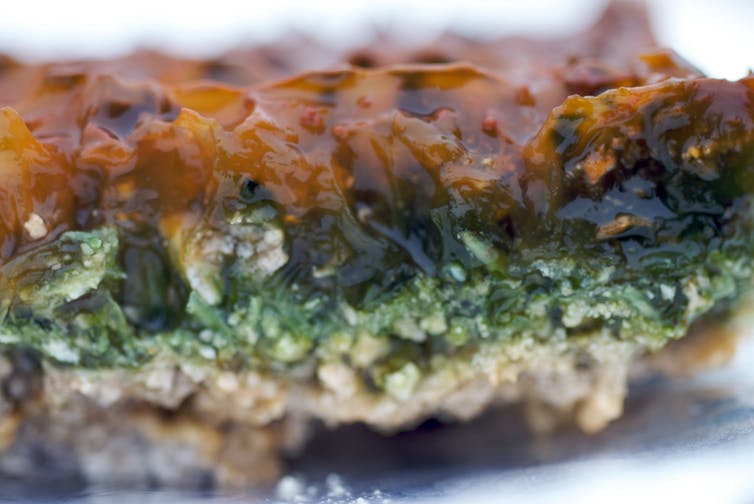
ExoMars Rover Will Drill Deep Into Mars to Search for Life (Op-Ed)
This article was originally published at The Conversation. The publication contributed the article to Space.com's Expert Voices: Op-Ed.
Finding past or present microbial life on Mars would without doubt be one of the greatest scientific discoveries of all time. And in just two years' time, there's a big opportunity to do so, with two rovers launching there to look for signs of life – Mars2020 by NASA and ExoMars by the European Space Agency and Roscosmos.
I am helping to develop one of the instruments for the ExoMars rover, which will be Europe's first attempt to land a mobile platform on the red planet. It will also be the first rover to drill into the martian crust to a depth of two metres.
But the rover will not be the first to look for evidence of life. The Viking landers sent by NASA in the 1970s carried experiments designed to so. They were ultimately unsuccessful, but provided a wealth of information about Mars' geology and atmosphere that comes in handy now. In fact, exploration over the last half-century has shown us that early Mars was once a dynamic and potentially habitable planet.

While it is not completely impossible that life could exist on Mars today, ExoMars is primarily focused on looking for extinct life. Because there's a risk it could contaminate the planet with microbes from Earth, it is not allowed to go near the sites where we think it's possible that microbes could exist today.
Chemofossils are the best bet
On Earth, life constantly unfurls around us, leaving its mark on our planet every day. There are, however, a number of factors to contend with when looking for life on Mars. The first is that the lifeforms we are looking for are single-celled microorganisms, invisible to the naked eye. This is because life on Mars is unlikely to have progressed any further down the evolutionary path. This is actually not so strange – Earth itself was a world of single-celled life for two billion years or more.
Another issue is that the life we're looking for would have existed three or four billion years ago. A lot can happen in that time – rocks preserving this evidence can be eroded away and redeposited, or buried deep beyond reach. Luckily, Mars does not have plate tectonics – the constant shifting about and recycling of the crust that we have on Earth – which means it's a geological time capsule.
Get the Space.com Newsletter
Breaking space news, the latest updates on rocket launches, skywatching events and more!
Because we are looking for evidence of long-dead microorganisms, the hunt for bio-signatures lies in the detection and identification of organic "chemofossils" – compounds that are left behind by the decomposition of life. These are different to organic compounds delivered to planets on the backs of meteorites, or those, such as methane, that can be produced by both geological and biological processes. No single compound will prove life once existed.
Rather, it will be distinctive patterns present in any organic compounds discovered that betray their biological origin. Lipids and amino acids, for example, are fundamental components to living things, but are also found in certain meteorites. The difference lies in finding evidence that shows a process of selection. Lipids left behind by degraded cell membranes will likely have a limited size range, and comprise an even number of carbons. Similarly, amino acids naturally exist in both left-handed and right-handed forms (like gloves), but for some reason life only uses the left-handed ones.
It is also possible for microorganisms to produce visible fossils in the rock record. When conditions allow, microbial mats (multilayered communities of microorganisms) can become interspersed with fine sediment, producing characteristic morphological structures in rocks that form subsequently. However, the specific environmental conditions required for this mean such deposits are unlikely to be discovered by a rover exploring just one small region of a whole planet.

So, the best bet will be looking for organic compounds, a task which falls to the Mars Organic Molecule Analyser (MOMA) – the largest instrument in the ExoMars rover payload.
One intriguing finding from the Viking landers was the absence of detectable organic compounds at the martian surface. This was unexpected – many organic compounds are found throughout the solar system that do not form through biological activity. Subsequent missions revealed that a combination of harsh chemistry and intense radiation effectively remove much of the organic material from the surface of Mars, regardless of its origin.
But more recently NASA’s Curiosity rover has begun to find some simple organic compounds, hinting at what may lie beneath. By analysing samples brought up from below the surface, MOMA will have a better shot at finding those organic biosignatures that have survived the ravages of time.
Confusing contamination
Before any search for biosignatures even begins, however, ExoMars will first need to find the right rocks. The landing sites shortlisted for the mission have, in part, been chosen based on their geological characteristics, including their age (more than 3.6 billion years old).

If MOMA identifies organic molecules within the samples brought up by the drill, one of the first things will be to establish whether they are the result of contamination by any rogue Earth-based organics. While ExoMars is looking for alien life, it is designed to look for life that is based on the same fundamental chemistry as life on Earth. On one hand, this means highly sensitive instruments like MOMA can be designed that target biosignatures that we have a good understanding of, and therefore increase the likelihood that ExoMars will be a success.
The downside is that these instruments are also sensitive to life and organic molecules on Earth. To ensure terrestrial organic or microbiological stowaways are minimised, the rover and its instruments are built and assembled inside ultra clean rooms. Once on Mars, the rover will run a number of "blank" samples, which will show what, if any, contamination may be present.
Ultimately, finding strong evidence of extinct life on Mars, whether it be chemofossils or something more visible, will be just the first step. As with most scientific discoveries, it will be a gradual process, with evidence building up layer by layer until no other explanation exists. If the NASA Mars2020 rover also finds similarly tantalising evidence, then these discoveries will represent a step change in our understanding of life in general. And, while incredibly unlikely, it is of course possible that ExoMars chances upon some living martian microorganisms.
Whether ExoMars hits the jackpot remains to be seen, but at the very least it will mark a new beginning for the search for life on Mars.
Claire Cousins, Research Fellow in Planetary Science, University of St Andrews
This article was originally published on The Conversation. Read the original article. Follow all of the Expert Voices issues and debates — and become part of the discussion — on Facebook, Twitter and Google +. The views expressed are those of the author and do not necessarily reflect the views of the publisher. This version of the article was originally published on Space.com.
Join our Space Forums to keep talking space on the latest missions, night sky and more! And if you have a news tip, correction or comment, let us know at: community@space.com.









